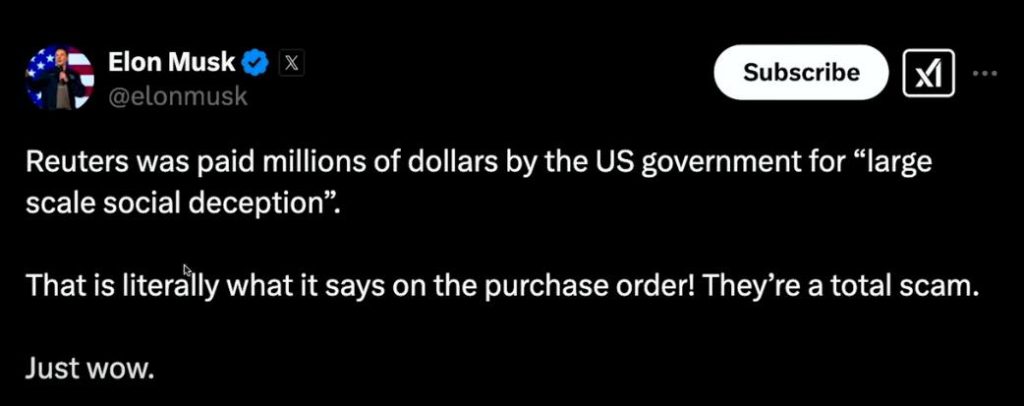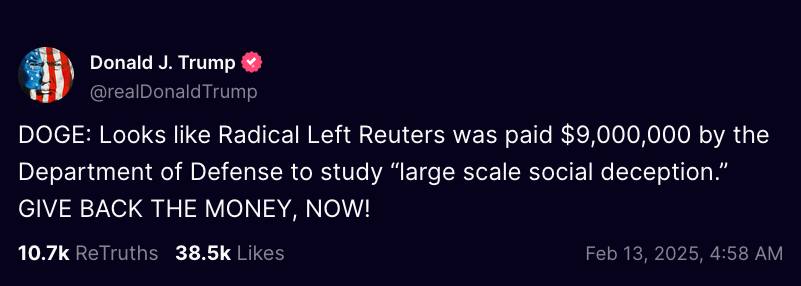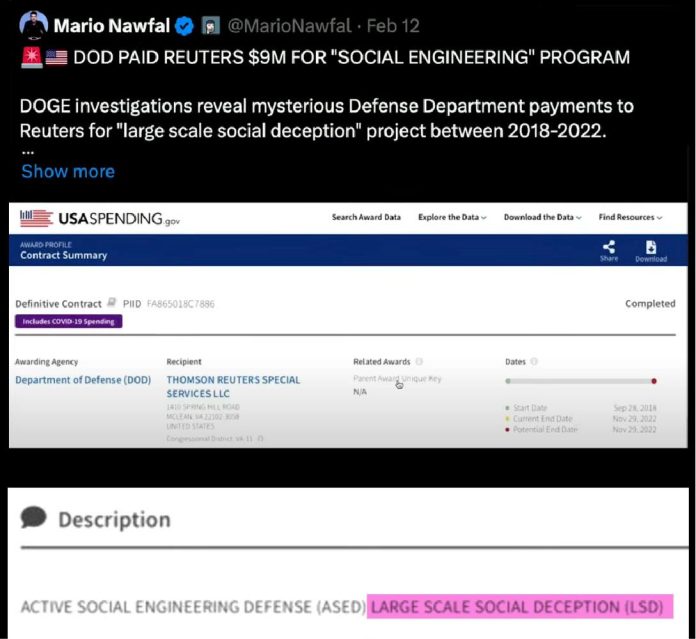Elon Musk, DOGE, and the Case of the Misread Contract: A Tale of Misinformation and Confusion
In the ever-chaotic world of social media, where misinformation spreads faster than facts, a recent episode involving Elon Musk, his followers, and a misread government contract has provided a perfect example of how easily confusion can spiral into conspiracy. The saga, which began with a tweet and ended with a cascade of misguided outrage, highlights how even the most influential figures can fall victim to their own lack of due diligence. It’s a story that reads less like a masterstroke of 4D chess and more like a game of checkers played with rocks, bottle caps, and half-eaten saltine crackers.
The Spark of Confusion
The drama began when Mario Nawfal, a self-styled political influencer, decided to dig into the USASpending.gov website—a publicly accessible database of U.S. government contracts. Nawfal stumbled upon a $9 million contract between the Department of Defense (DOD) and an entity named “Thomson Reuters Special Services LLC.” Misinterpreting the details, Nawfal concluded that this was evidence of a nefarious “large scale social deception” project involving Reuters, the well-known news outlet.
Without verifying the facts, Nawfal took to Twitter (now X) to announce his “discovery” to his 44 million followers: “DOGE investigations reveal mysterious Defense Department payments to Reuters for ‘large scale social deception’ project between 2018-2022.” The implication was clear: the U.S. government was allegedly funding a psychological operation (psy-op) through a major media outlet.
The Domino Effect
Enter Elon Musk. The billionaire entrepreneur, known for his impulsive tweeting habits, saw Nawfal’s post and promptly shared it with his 218 million followers. Musk, who has positioned himself as a champion of free speech and a critic of mainstream media, didn’t bother to fact-check the claim. His amplification of the tweet gave it an air of credibility, despite its shaky foundations.

The chain reaction didn’t stop there. Former U.S. President Donald Trump, ever eager to stoke the flames of controversy, reposted Musk’s tweet on his Truth Social platform. Addressing his 9 million followers, Trump lambasted the “Radical Left Reuters” and demanded they return the money. The narrative was set: the DOD, Reuters, and the “radical left” were all part of a shadowy scheme to deceive the public.

The Reality Check
The only problem? The entire premise was wrong. A closer look at the USASpending.gov website—which Nawfal himself had screenshot and shared—reveals that the contract in question was not with Reuters, the news agency, but with Thomson Reuters Special Services LLC, a cybersecurity firm. While both entities share the “Reuters” name, they are entirely separate organisations with distinct functions. Reuters is a global news provider, while Thomson Reuters Special Services is a company specialising in cybersecurity and intelligence solutions.
The contract itself was for Active Social Engineering Defense (ASED) Large Scale Social Deception (LSD)—a program designed to defend against large-scale social deception, not to perpetrate it. In other words, the DOD was paying Thomson Reuters Special Services to protect against cyber threats, not to engage in any form of psychological manipulation.
Why This Matters
This episode is more than just a case of mistaken identity; it’s a cautionary tale about the dangers of misinformation in the digital age. Nawfal, Musk, and Trump—three influential figures with massive platforms—failed to perform even the most basic fact-checking before spreading a false narrative. The result was a wave of unwarranted outrage, directed at an innocent news outlet and based on a complete misunderstanding of the facts.
It also underscores the broader issue of how easily complex information can be misrepresented, especially when it involves technical or bureaucratic details. The conflation of “Thomson Reuters Special Services” with “Reuters” is a prime example of how a simple error can snowball into a full-blown conspiracy theory.
A Lesson in Due Diligence
The irony of the situation is palpable. Musk and his followers often position themselves as crusaders against “waste, fraud, and abuse” in government spending. Yet, in this case, their eagerness to uncover wrongdoing led them to misinterpret a contract that was, in fact, aimed at protecting the public from cyber threats. The real waste here was the time and energy spent chasing a phantom scandal, all because no one bothered to read the fine print.
In the end, this saga serves as a reminder that not everything is as it seems—especially on social media. Before hitting the retweet button or firing off an angry post, it’s worth taking a moment to verify the facts. Otherwise, we risk playing checkers with rocks and bottle caps, while the real game passes us by.







